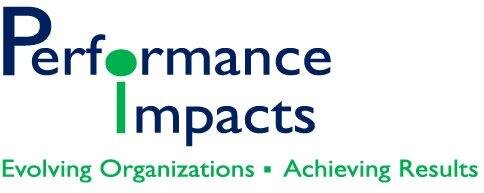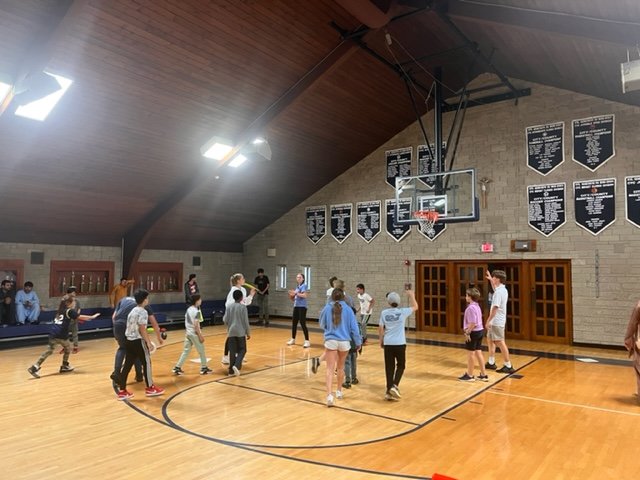By Erica North and Karrie Carlin
In our last blog post, we shared advice on building change champions (i.e. individuals who influence, promote, and drive transformation across an organization). To build on that topic, this post is going to dive into how to manage resistance to change. Because even the best equipped change champions will face resistance. Resistance to change is inevitable. It’s a natural response when people feel uncertain, overwhelmed, or skeptical. As leaders and change management practitioners, our goal isn’t to avoid resistance, it’s to understand and navigate it effectively. Great change leaders know how to turn hesitation into engagement, skepticism into support, and push back into forward progress. So, let’s dig into spotting resistance early, addressing employee concerns, and gaining the buy-in needed for change to happen.
Spotting Resistance
Resistance to change isn’t always overt. Sometimes, it’s subtle – that’s why the key is knowing what to look for. Catching resistance early allows you to address concerns before they spread within your organization and become roadblocks.
Some common signs of resistance include:
Silence and Avoidance – Employees disengage from discussions or ignore requests for input
Delays – Deadlines keep getting pushed back and other tasks take priority
Skepticism and Criticism – People question the need for change or bring up past failures
Low Adoption – Employees hesitate to use new tools, skip training, or cling to old processes
Understanding the cause of resistance is just as important as recognizing the signs. People resist change for different reasons. Such as:
Lack of Awareness – They don’t understand why the change is happening
Fear of the Unknown – They feel uncertainty about their role, responsibilities, or job security
Perceived Loss – They believe they will lose status, influence, or effectiveness
Mistrust in Leadership – They have doubt in the leadership team’s ability to execute change well
Overload and Fatigue – There are too many changes happening at once and that leads to burnout
Turning Resistance into Engagement
Once you spot resistance and have spent some time understand the cause of it, the next step is handling it in a way that builds trust and encourages involvement from the individuals impacted by the change. Here’s how:
1. Listen to Employees and Acknowledge Concerns
It’s important not to dismiss resistance but rather engage with it. Find opportunities for employees to be heard, such as holding meetings to share information and clear up misperceptions, conducting interviews to gather feedback, or setting up small-group discussions, or focus groups, where employees can share their concerns.
2. Clarify the ‘Why’
Employees are more likely to embrace change when they understand the big picture. Clearly articulate why the change is necessary, how it benefits employees, as well as what success looks like and their role in achieving it.
3. Engage the Right People Early
Involving the right employees at key times allows you to uncover and respond to concerns before they turn into major roadblocks. You can do this by assessing how ready employees are for change. When employees feel unprepared, uncertain, or unsupported, resistance will occur more often.
This is where our Change Readiness Assessment (from our Transformational Change Guide) can help. By proactively gathering insights, you can gauge how prepared employees are for the change, identify areas where additional support or communication is needed, and proactively address resistance before it escalates. This approach ensures employees are equipped, engaged, and ready to support the change. [Access the Change Readiness Assessment Here]
4. Empower Your Change Champions
Just as change champions play an important role in driving change forward (as we discussed in our previous blog post), they can also help mitigate resistance. Leverage your change champions to address skepticism among their peers, model the desired behaviors, and share success stories and early wins to build momentum. Also, continually identify opportunities to ensure the change champions are engaged and building strategic change capabilities.
5. Offer Support and Resources
Employees often resist change when they don’t feel confident in their ability to navigate the change. By providing training, job aids, coaching, and real-time support you can increase employees’ confidence and, ultimately, adapt to the change more quickly.
Consider providing the following support channels:
Training sessions to address specific concerns
Mentoring or peer groups for knowledge-sharing
Feedback loops (surveys, pulse checks) to assess buy-in and support
Clear documentation and job aids to explain and reinforce the new processes and expectations
Leadership visibility and involvement to show their commitment to the change and reinforce the ‘why’ behind it
Turning Resistors into Champions
While unresolved resistance can delay change, the good news is that resistance is not permanent. In the end, it’s possible that the biggest skeptics can become your biggest proponents of the change. Managing resistance means turning critics and resistors into change champions who help drive the change forward. Many times, it is important to outline a plan and communication strategies so that stakeholder engagement is planful and aligned to elevating engagement outcomes. To do this, consider the following:
1. Involve Resistors in the Process
People are less likely to resist what they help create. Give resistors a seat at the table by inviting them to planning discussions, pilot groups, or feedback sessions.
2. Communicate, Communicate, Communicate
Change communication should be transparent, ongoing, frequent, and multi-channeled (emails, town halls, one-on-ones). Remember to reiterate key messages and celebrate progress along the way.
3. Celebrate Quick Wins
Showcase early successes to build momentum. Highlight small wins and success stories frequently.
4. Reinforce and Recognize
Publicly recognize employees who embrace the change. You can do this through formal recognition programs or simple shout-outs. Either way, positive reinforcement strengthens buy-in.
5. Adapt and Iterate
Just as resistance isn’t permanent, it also isn’t static. It can shift as the change progresses. It is important to regularly gather feedback and adjust as needed.
Final Thoughts
When handled effectively, resistance to change isn’t a roadblock, it’s an opportunity! By recognizing, addressing, and engaging with resistance the right way, you can build stronger buy-in and momentum for lasting change. If you’re leading change within your organization, check out our Transformational Change Guide. This guide provides a clear approach and framework for you to successfully navigate transformation, build buy-in, and drive lasting impact.













